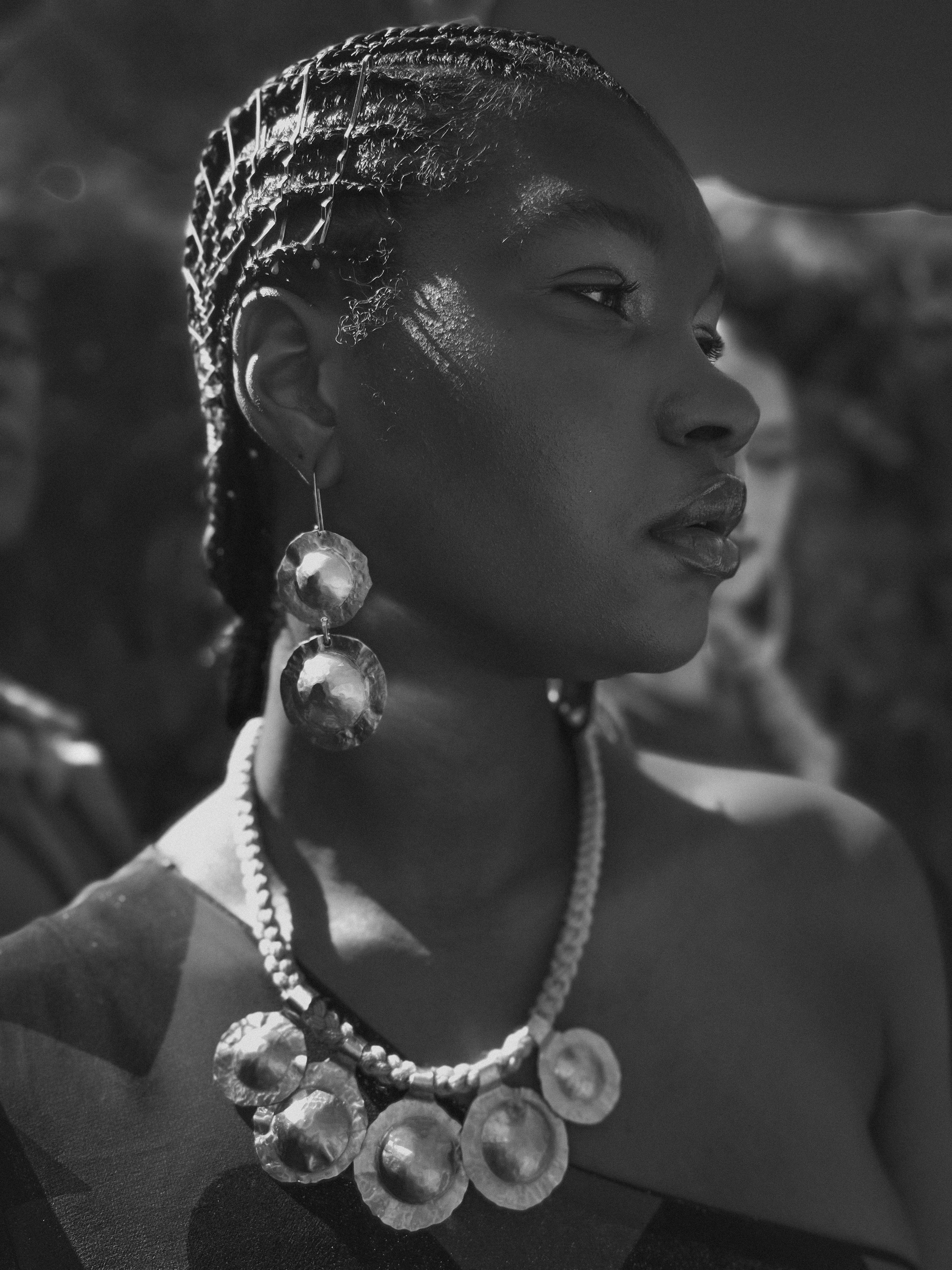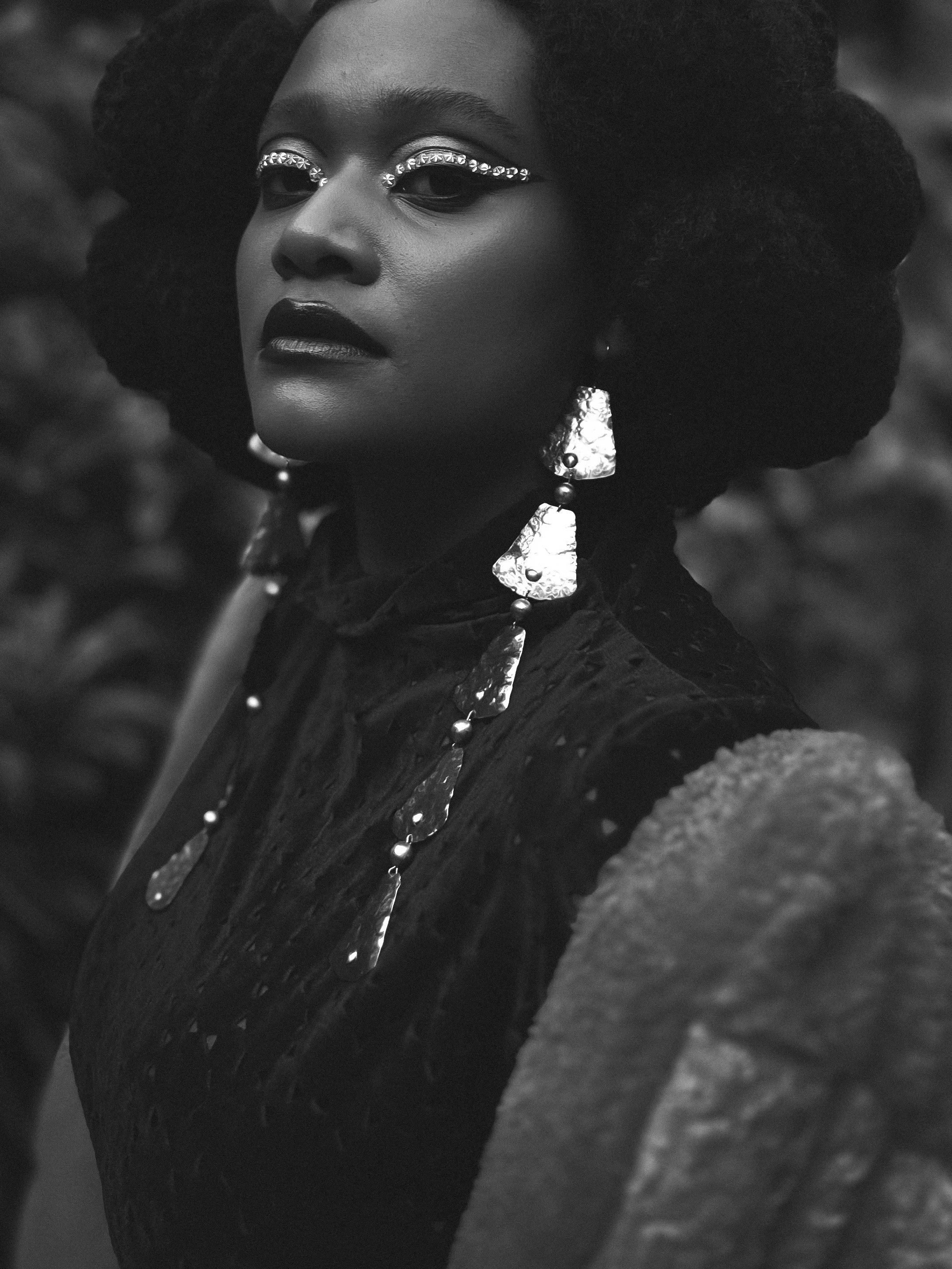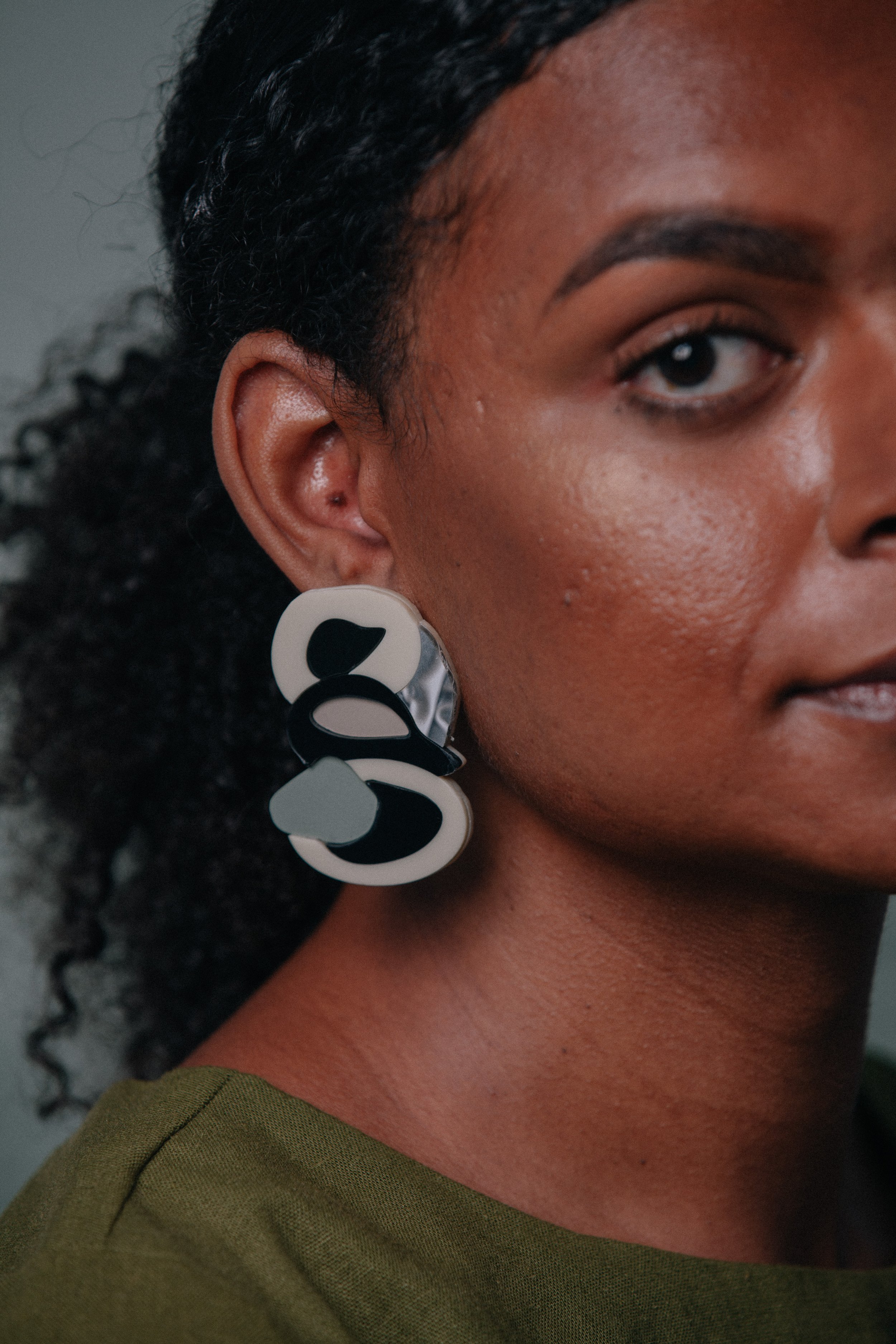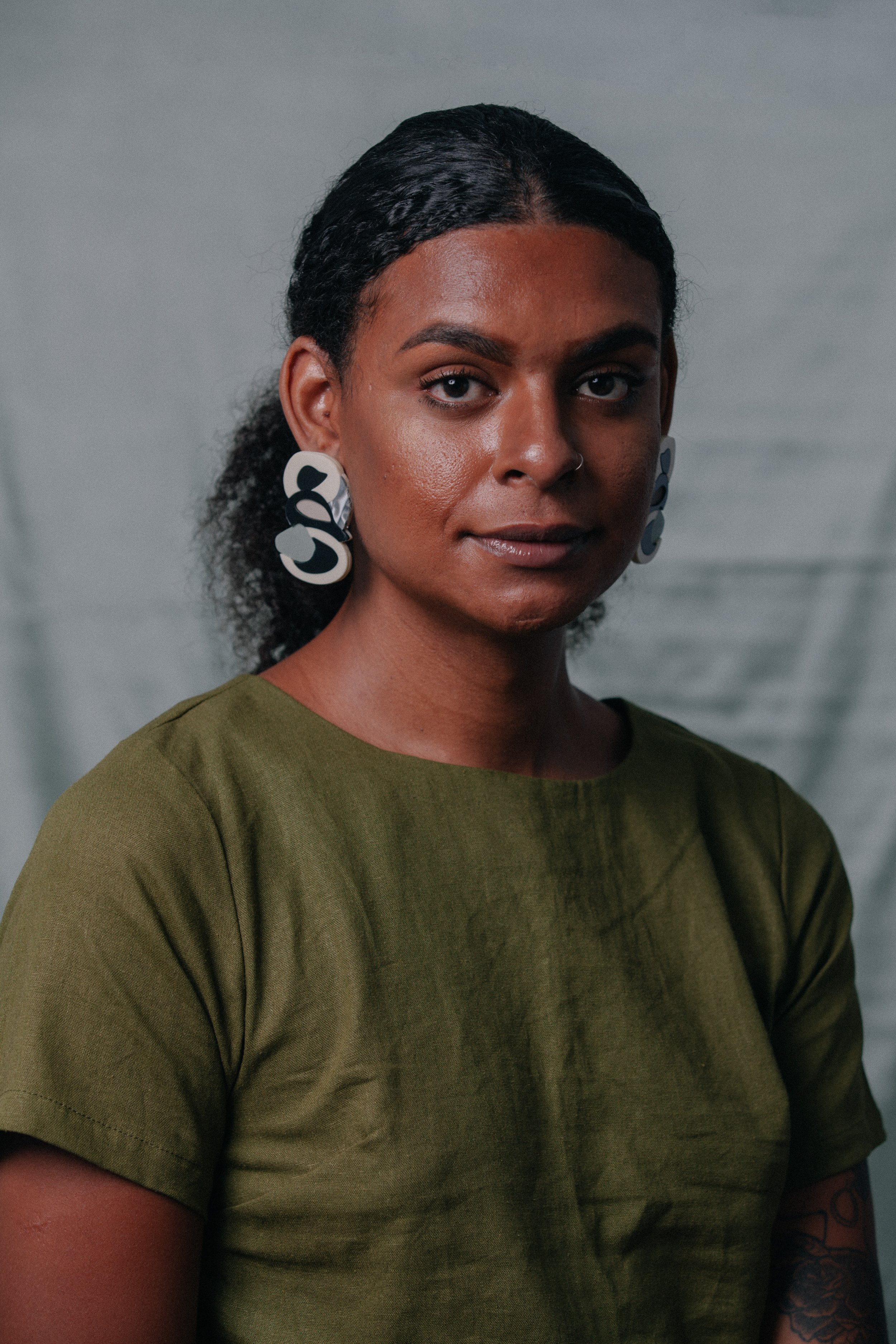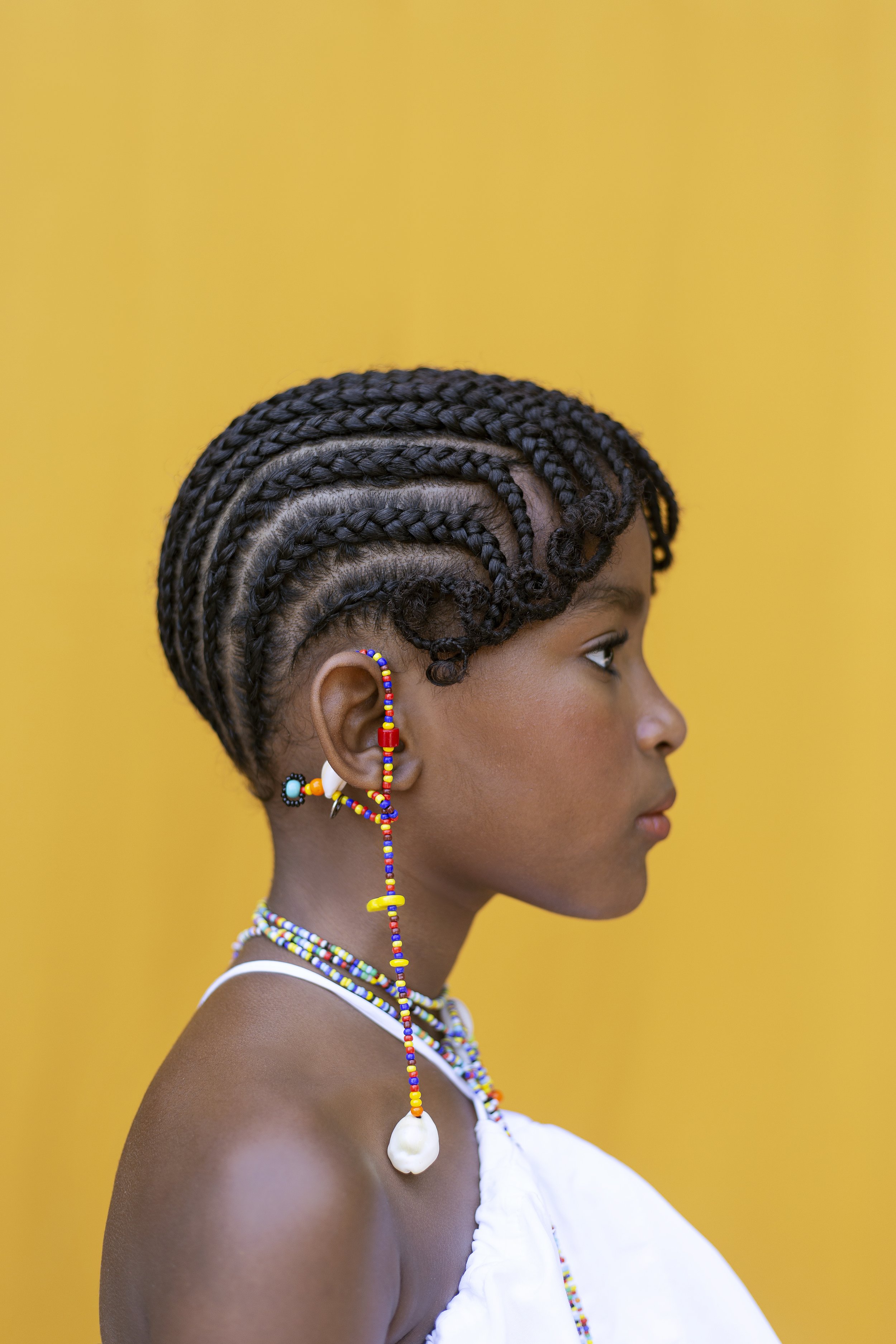Jewellery Telling Black Stories In Brazil
Luma Nascimento, creator of Lemoriô. Photo: Jéssica Senra
In the 19th century, a class of Black women traders in Brazil, both free and enslaved, invested their earnings in symbols of social status. They used Creole Jewellery as a strategy to save their dignity, having been so affected by colonisation in the country, and to represent their religious values.
As seen in Marc Ferrez's photography, the jewellery worn by these women was opulent and of great visual interest. It was common to see them wearing chain necklaces, pendants featuring Catholic symbols or other Afro-Brazilian religiosities, or even large bracelets on their wrists and rings on every finger.
The overlapping of pieces, or even wearing an excess of them, became an expressive mark of the collaboration of Afro-descendant women in the development of one of the first Brazilian jewellery styles. The construction of this aesthetic was fundamental in the practices to free more Afro-descendants from the slavery regime, mainly through the trade of balangandãs—accessories full of pendants, which were believed to bring protection and good luck.
This piece above, typical of Brazilian jewellery at the time, represents the cultural miscellany that formed the country's identity. It mixes elements from different cultures that shake amid the body’s movements, making the presence of those who wear them impossible to be ignored.
The reinvention of traditional Afro-Brazilian jewellery
Even today, this history inspires the creative process of new designers, such as Dani Guirra, who has maintained the tradition of working with metals. Her pieces are made of raw copper, brass or alpaca, and she is known for using hammer blows on her creations to invoke the craft of metalsmith. This technique allows her to make some imperfections of the material almost imperceptible—a deliberate choice evoking the ongoing reflection on the collective and bodily memory of a people present in her work.
“The purpose of this brand will always be to walk this path of self-knowledge.”
For the creative, fashion is a field that allows her to communicate through the body. It is her space to exchange ideas and provoke dialogue. “The goal is to reach out to people, to see people, and for them to identify with it. Because there is nothing more motivating and incredible in the world than thinking that a person anywhere in Brazil, especially if they are a Black woman, is choosing these adornments to use in moments of personal achievement”.
Guirra recognizes that the legacy of these women influences her work, and the research of these stories has helped her to better understand her creative process. “It's not necessarily that my aesthetic that is similar to theirs, but the way I decided to do this process is similar. It's strategic”.
The designer has been launching new products when she intends to communicate something, which helps her to intentionally choose the visual elements that can illustrate her stories. “The purpose of this brand will always be to walk this path of self-knowledge”, she concludes.
Reluzente Collection was also created in partnership with clothing brand Naya Violeta. Photo: Lu Bortoline
New perspectives opposing traditional jewellery
Some creatives are questioning the creation of jewellery produced with metals. Themes such as sustainability and concern for the workers who supply raw materials have become a guiding force for some brands.
Biologist Karla Batista created Azulerde, a jewellery brand that was born to renew the industry. It reframes raw materials that would otherwise be discarded as garbage and innovates around what could be considered an Afro-Brazilian jewellery concept.
Batista’s creative process allowed her to expand experimentation with materials. At first, she worked only with acrylic, but bit by bit she introduced reused wood, new and reused melamine laminate, and by plastics, an innovative material that is developed from the recycling of plastic bags. The choice reflects on its audience, which has also been identified with these more sustainable and sophisticated materials.
Delírio earrings, Abstraída (Abstracted) collection. Designer Karla Batista brought a sober palette, textures, botanical references, colour balance, organicity, asymmetry-symmetric, upcycling and visual arts to this collection.
Azulerde invests heavily in research to understand the origin of the materials they will use. “I will not use wood or silver without knowing where it came from. Even working with metals in Brazil is immensely difficult, because most of them come from mining that harms all the fauna and flora of the region. I continue with my research to understand the best way to improve my materials without causing negative impact”, explains Batista.
Research allows her to experiment with different processes, and one of her favourites is to work with the overlapping of these materials, mixing different reliefs and textures through collages. It is these craft practices that made her understand that her product is much closer to the fields of art and design, than from traditional jewellery.
“My priority is to be able to imagine a collection that presents a clear message, where I can work with different techniques and deliver a result that corresponds to a more dignified production on the planet.”
“My differential has always been my design, what I can do with that design, and my goal is to have infinite materials. I’ve had some big breaks in the art and design markets, and add greater value. My priority is to be able to imagine a collection that presents a clear message, where I can work with different techniques and deliver a result that corresponds to a more dignified production on the planet”, reflects the creative.
With a similar purpose, the visual artist Luma Nascimento created Lemoriô: jewellery made with glass beads and other organic materials, such as cowry and shells. The name of her brand has its origin in the word Emoriô, which is a greeting of West African origin meaning “I See You” and also the title of a song interpreted by the Brazilian musician João Donato, and added to the first letter of the name of its creator.
The arts are very present in Nascimento's work, so much that it became difficult for her to reconcile the idea that she creates accessories. She prefers her creations to be called “works” or “adornments”, as they involve research and reflect on Afro-Brazilian memories. “This search for what is commonly called an accessory, which I call an adornment, was precisely me trying to understand how I filled my body with things that made sense”, she explains.
Lemoriô. Photo: Juh Almeida
As a researcher, she perceives how Afro-descendant memory is fragmented and mixed with different references. In the case of Brazil, for example, African cultural heritage was also influenced by indigenous cultures and European impositions. A pioneer in the research and documentation of beads, which for a long time were considered an important bargaining chip, she concludes that this material was produced by Europeans and began to be absorbed by African and indigenous cultures in Latin America over the centuries.
Beads produced from glass, for example, are considered an energy conductor, an idea that came from Afro-Brazilian religions. “I'm talking about people who work with rituals, with portals, with cultures. Glass is a driving element, which is why the African people who produce these beautiful works use a certain type of beads”, Nascimento explains.
“I believe in ancestry. What Lemoriô will always work on is remembrance, and reconnecting people with dormant memories.”
In Candomblé, some hierarchies and temporalities are told through the use of beads. This material is also used by African peoples such as the Maasai, Yoruba and Zulu as a form of narrative, and based on its patterns, reveals the social roles and life cycles of those who use it.
Lemoriô's customers perceive these meanings and they can also co-create their pieces with the artist; “It's the ongoing memory of jewellery and the making process creating sense in the person's head. It's jewellery exactly the way the person wants it, and that's very precious”.
Nascimento recognizes her work as a language that allows her to communicate, and where orality is fundamental. “I believe in ancestry. What Lemoriô will always work on is the memory process, and reconnecting people with dormant memories. This is my purpose with the research, that the beads become a common thread on this road”, she concludes.
The visual poetry crafted by her and so many other creatives has made it possible to broaden our minds around what should be recognized as Afro-Brazilian jewellery. As diverse as the formation process of Brazil itself, this field also reflects the history of those who seek to re-signify and reinvent the memories brought by the African diaspora.






